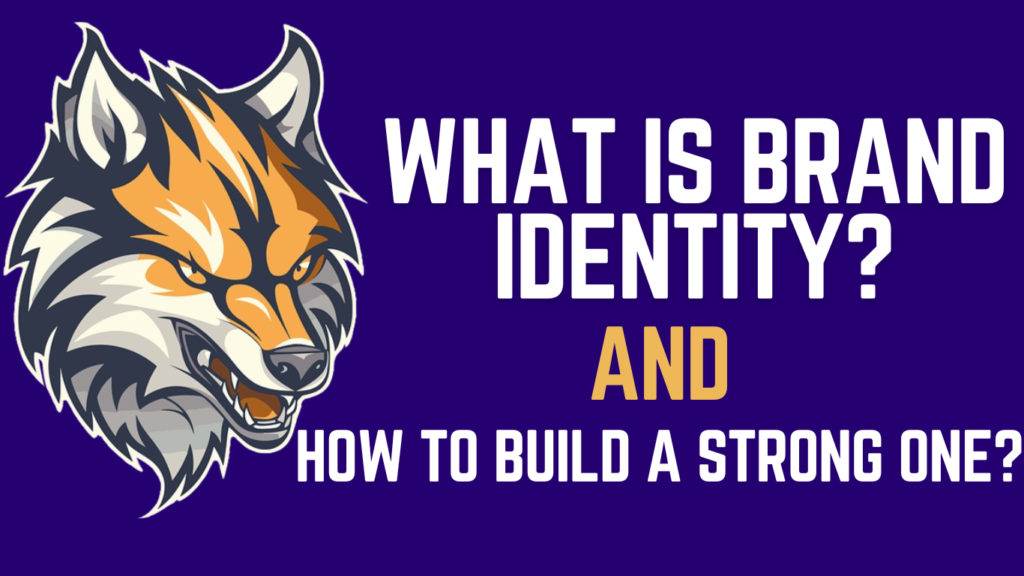When I was in college, I had an argument with my best friend – Riya.
Riya the energetic soul, had gone out to party with our other batchmates when I went to sleep. I was upset with her because she didn’t wake me up.
She genuinely said. “ I didn’t want to disturb your beauty sleep Priyanka”.
“Had I been in your place I would have woken you up and we would have partied together Riya”, I was furious,
And,
Just because of this trivial issue, we hadn’t spoken to each other for weeks and Riya was quite upset about it. So much so that our Class teacher (Swati Ma’am) had to intervene.
Swati Ma’am tried explaining to me in several ways about Riya’s point of view. But to me I was right and Riya was wrong, hence I was not ready to talk to her at any cost.
Then finally Swati Ma’am asked:
“What is the solution to this Priyanka? You are upset with her because she did not behave the way you would have, right?”
“Yes”, I was firm.
“”Okay, imagine you wake up one morning and Riya not only looks like you but also behaves exactly like you.”. And why only Riya, Imagine every classmate of yours looks exactly like you and behaves just as you do”.
Silence. I was speechless. Thinking about this was scary.
“Terrified”, she laughed.
“ Everybody has their own personality, their characteristics, their individuality, their thought process. Let’s respect everybody’s identity and accept them the way they are.”
Lesson learned- Each one of us has an identity and we are recognized for what we are. From our outward appearances to our behavioral characteristics, everything comes together to form an individual identity.
In the same way.
Every product has a brand identity so that we the ‘users’ can differentiate them from each other.
Imagine you go shopping to a store and you see this👇

How will you come to know what to buy?
Isn’t it easier with this👇
Just because every product has a proper name, color palette, branding, packaging and identity, we know what to buy for ourselves.
Hence, to tell your audience you exist. First, you need to create brand identity for your product/service in the market.
Today we will give you a roadmap on how to create your brand identity in detail, with no step skipped, but before that let’s be clear on what is brand identity and why is it so important,
What is Brand Identity Exactly?
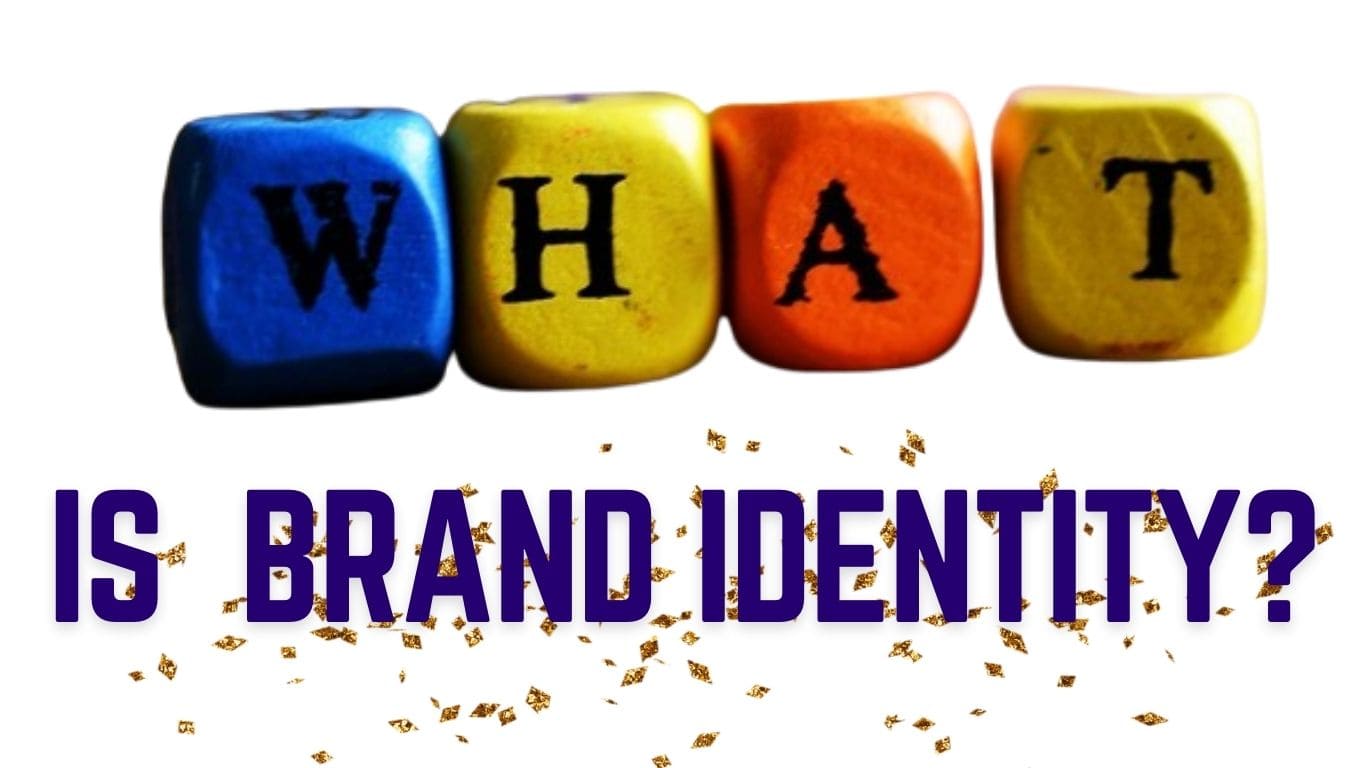
It is a collection of all the aspects that a business generates to project its correct image in front of its customers, which include:
- Choosing a business name,
- The design of your logo
- Styles, fonts, and colors
- The shapes, icons, or graphics that you make use of
- The words you employ (“tone of voice”).
Brand Identity Definition:
Brand identity is how you want your company to appear in front of your customers. It relates to the physical aspect of your brand. It encompasses everything you can see, smell, touch, taste, and hear.
It enables a brand to be discovered, remembered, and recognized again.
Brand Identity promotes and executes the brand strategy (when it is aligned), also helping with the accumulation of experience.
Why is Brand Identity important for your Product/Service?
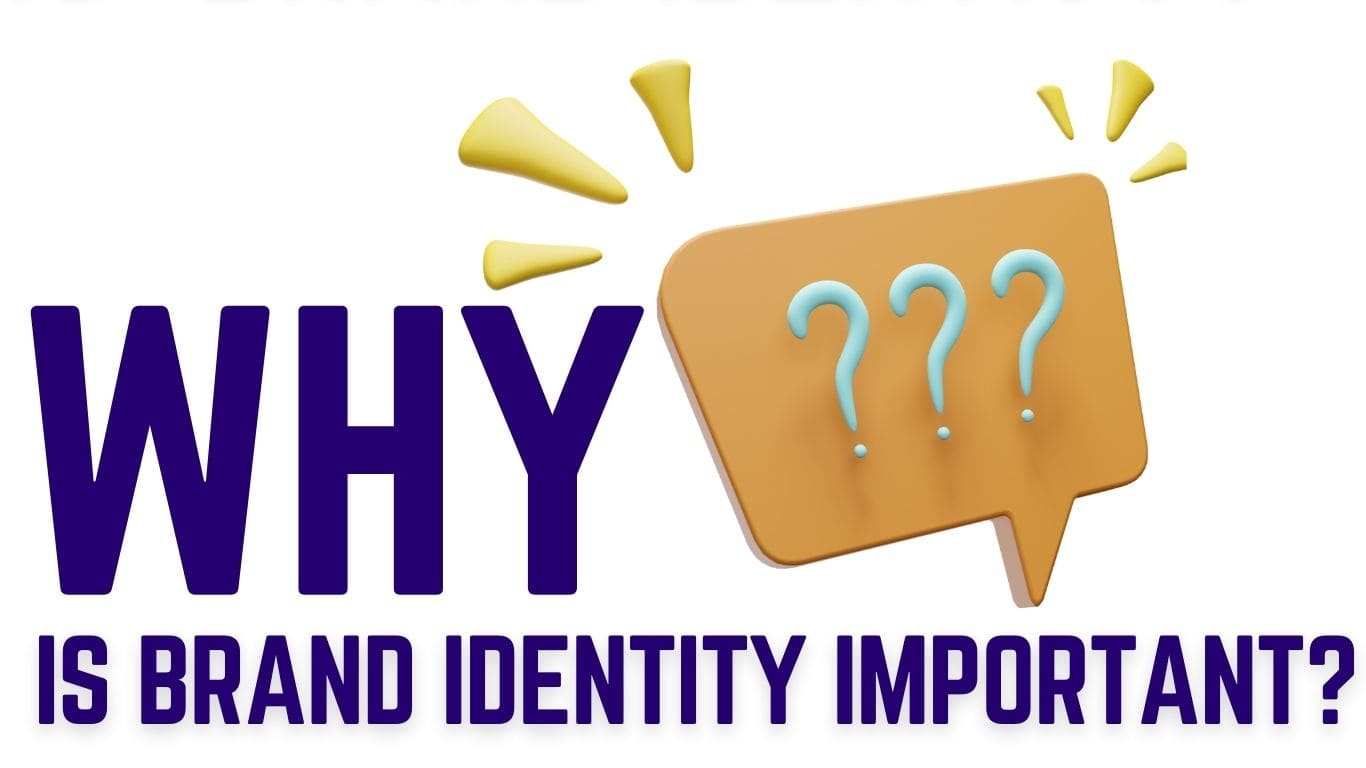
- Enables you to stand out from your competition:
Your company’s brand identity helps it stand out from the competition. In a congested economy where products and services may have similar qualities, a distinct brand identity distinguishes you and attracts clients who share your values and experiences.
Let’s take the example of the brand “BOAT”
Boat distinguishes itself from other audio equipment firms in the market by using trendy designs and innovative features, with a focus on appealing to youth and q tech-savvy clientele. Its edgy marketing efforts and emphasis on lifestyle appeal strike a chord with youngsters of today, who value both style and practicality in their audio gear.
- Helps You Stay Consistent Across Platforms:
Having a consistent brand identity across all marketing platforms ensures coherence and professionalism. It helps customers recognize and remember your brand easily, whether they encounter it on social media, your website, or physical stores.
Lets take the example of the Brand- “PAPER BOAT”
Whether you encounter Paper Boat’s beverages on its website, social media channels, or in-store displays, you’ll notice consistent use of nostalgic storytelling, vibrant packaging designs, and messaging centered around childhood memories and traditional Indian flavors.
This consistent branding evokes a sense of nostalgia and authenticity, making Paper Boat a beloved choice for consumers looking for a taste of childhood in every sip.
- Builds Loyalty and Trust:
A strong brand identity builds customer trust and loyalty.. When customers consistently experience the same values, messaging, and quality associated with your brand, they are more likely to develop a sense of trust and loyalty towards your business.
Let’s take the example of the Brand- “RED BULL”
Red Bull’s brand identity is known for its association with extreme sports, adventure, and high-energy lifestyle. Through sponsorships of adrenaline-fueled events, bold marketing campaigns, and partnerships with athletes, Red Bull cultivates a loyal following among thrill-seekers and performance-driven individuals. They trust the brand to provide them with the energy and excitement they crave.
- Increases Awareness:
Brand identity helps in raising awareness about your business. Through consistent branding elements such as logos, colors, and slogans, you increase your brand’s visibility and make it easier for potential customers to notice and remember you amidst competition.
Let’s take the example of the chocolate brand– ‘Cadbury”
Cadbury’s brand identity and its iconic advertising campaigns master in making mouths water and hearts melt! In their iconic ads, they feature heartwarming stories and catchy jingles.
Cadbury raises awareness about their drool-worthy chocolates and confectionery products, creating a strong emotional connection with consumers they’re like the fairy godmother of cravings, popping up whenever you need a little indulgence.
- Provides Personality to Your Brand:
A brand identity gives your business a distinct personality and character that resonates with your target audience. By aligning your brand identity with the emotional needs and desires of your customers, you create a deeper connection and engagement, making your brand more memorable and desirable.
Let’s take the example of the brand- “Bewakoof”
Bewakoof’s brand identity is characterized by its quirky designs, humorous messaging, and emphasis on youth culture and self-expression. From witty graphic tees to playful accessories, Bewakoof embodies a fun and irreverent personality that resonates with young, trend-conscious consumers looking to make a statement with their fashion choices.
How to build a strong Brand Identity for your business? (The 5-Step Branding Process)
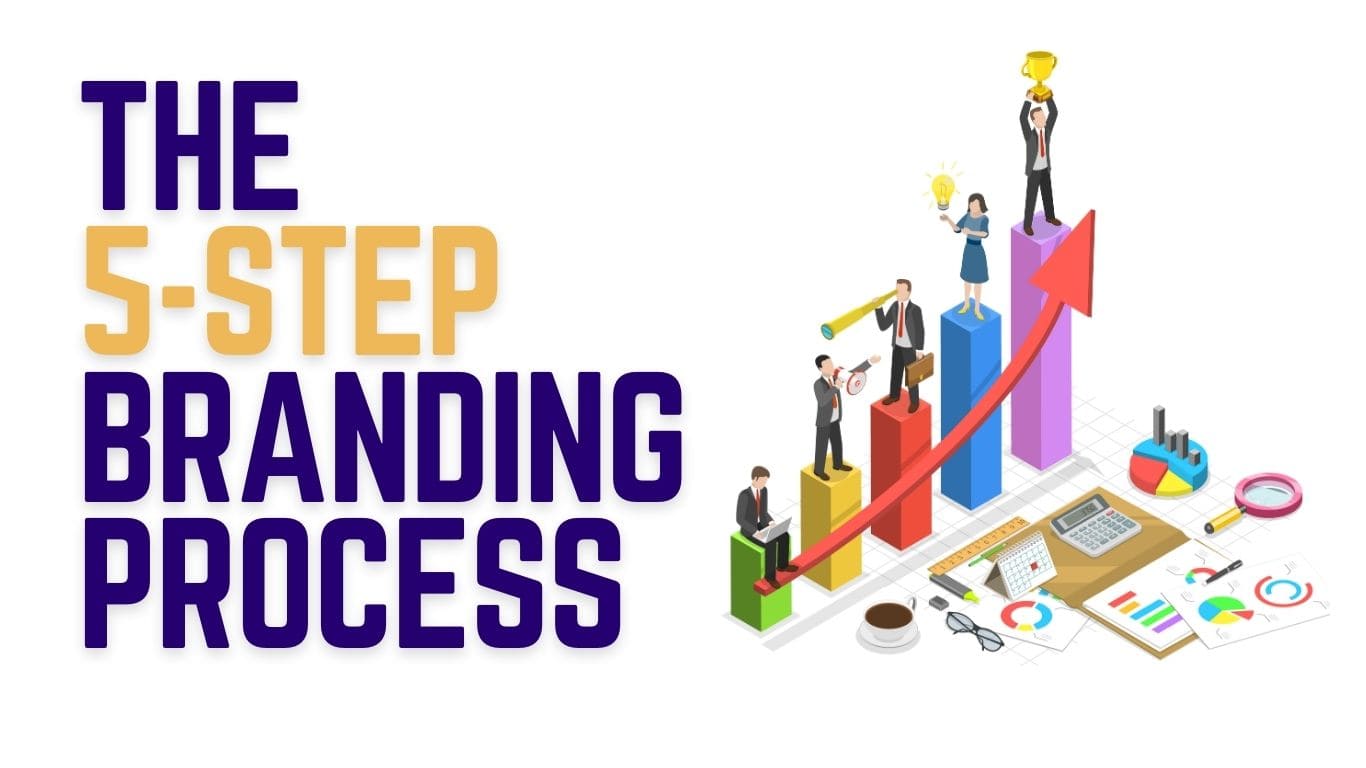
Step 1: Define Your Brand’s Core Values
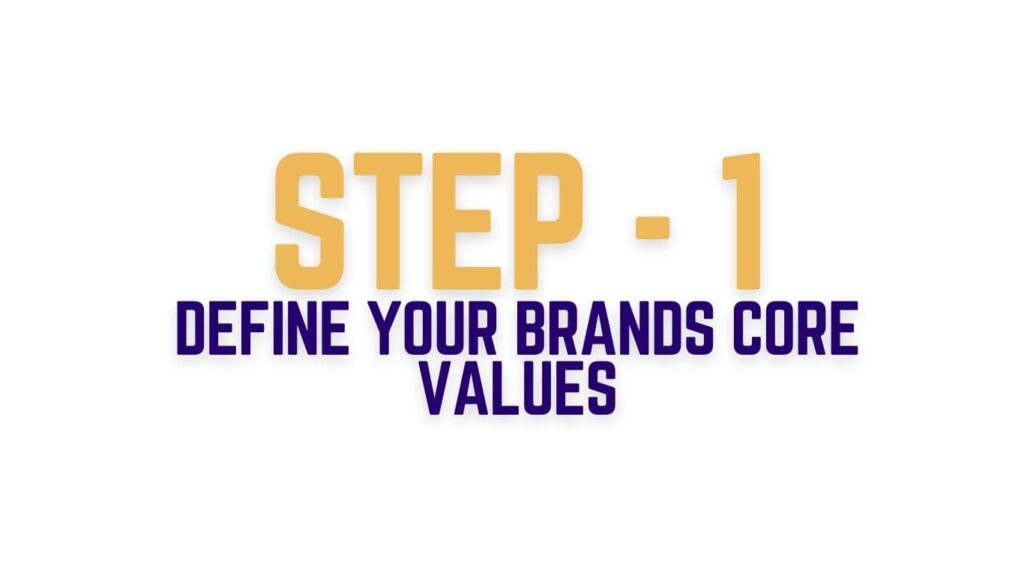
Beliefs:
They are like the compass that guides your brand’s decisions. It’s all about figuring out what’s really important to you and sticking to those principles no matter what.
Let’s take the example of the Brand- Patagonia.
Their belief in environmental conservation and sustainability guides every decision they make, from their product materials to their activism efforts. No matter what, they stick to their principles of protecting the planet.
Culture:
This is like the vibe of your brand – the attitudes, traditions, and way of doing things that make you who you are. It’s like your brand’s personality!
As an example let’s consider Disney.
Their brand culture is all about magic, imagination, and storytelling. From the theme parks to their movies, everything they do reflects this whimsical and enchanting vibe that’s uniquely Disney.
Voice:
Imagine your brand as a character in a movie. What would they sound like? How would they talk? That’s your brand’s voice – it’s what makes you sound like you.
Imagine the brand Apple as a character in a movie.
They’d probably sound sleek, cool, and minimalist, right? That’s their brand voice – it’s what makes their products and marketing feel so distinct and cohesive.
Feeling:
Brands are all about making people feel things – whether it’s excitement, joy, or just plain old comfort. Think about the emotions you want your brand to stir up in your customers.
When you think of Coca-Cola, what emotions come to mind?
Maybe it’s happiness, nostalgia, or just a sense of refreshment. That’s because Coca-Cola is all about creating positive feelings and experiences for their customers.
Impact:
This is the superhero part of your brand – it’s all about the positive change you want to make in the world. Whether it’s saving the planet or just making people smile, every brand has the power to make a difference.
Take TOMS for example.
With their “One for One” model, they’ve made it their mission to give back to those in need. Every pair of shoes purchased results in a pair donated to a child in need. That’s the kind of positive change and impact that sets TOMS apart.
Step 2: Clarify Your Brand’s Purpose and Audience
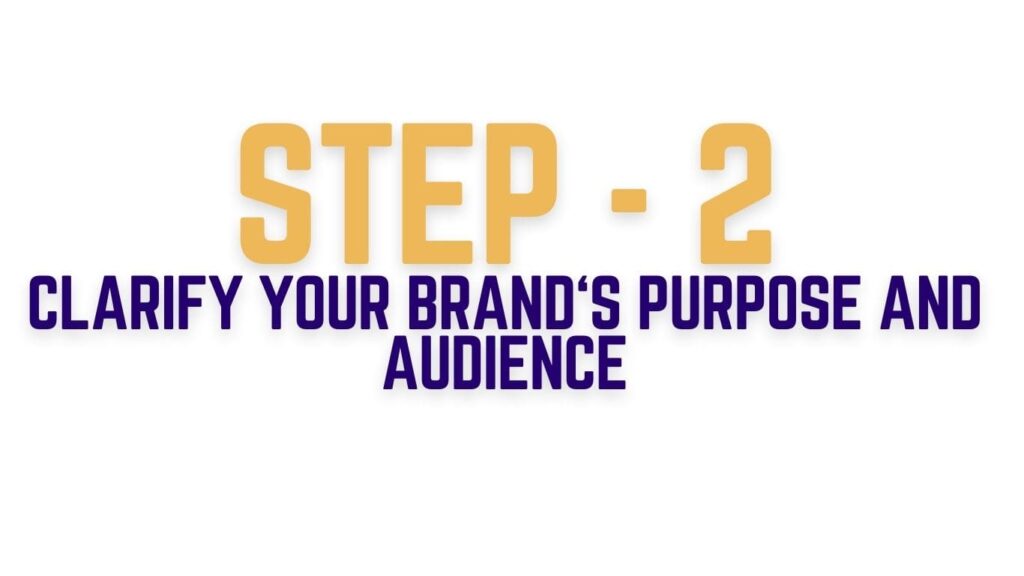
Why:
Every brand has a reason for being – a mission or purpose that drives everything they do. It’s like the big dream that keeps you going even when things get tough.
What:
This is all about the problems or needs your brand solves for your customers. It’s like being the hero who swoops in to save the day – but with products or services instead of a cape!
Who:
Clearly define your ideal customer demographics, psychographics, and behaviors. Your ideal customers are the people you’re here to help. Think about who they are, what they like, and how you can make their lives better.
How:
Outline the unique value proposition and solutions your brand offers. It’s all about explaining what makes your brand special and how you can solve your customers’ problems better than anyone else.
Where:
Determine the channels and platforms where your brand will engage with and deliver value to your customers.Whether it’s on social media, in stores, or on your website.
It’s all about figuring out where your customers hang out so you can be there too.
Step 3: Inject Personality and Craft Your Dialogue

Mission:
A mission statement is a targeted statement that drives your brand’s belief, also known as the elevator pitch of your brand.
Most brands struggle to clearly define what they do, who they do it for, and why do they exist. So we need to get to the point while still keeping the relevant information.
And here is the most simple way to do it- Just fill in the blanks of the statement below to get an effective mission statement for your brand-
For [YOUR TARGET AUDIENCE), [YOUR BRAND] is (WHAT VALUE DOES YOUR BRAND GIVE) by [HOW YOU MAKE IT POSSIBLE]
Let’s fill up the blanks for you with an example (NIKE]:
For [ATHLETES},[NIKE] {GIVES CONFIDENCE} by [PROVIDING THE PERFECT SHOE FOR EVEY SPORT].
That’s the mission of Nike.
Too many people fill their business descriptions with irrelevant information that just confuses their customers.The trick is to keep it simple, not just for yourself but so that your audience can actually remember it.
Let’s get going to create yours.
Goals:
Think of goals as the signposts on your brand’s journey – they show you where you’re going and how far you’ve come.
We must set clear objectives and milestones for our business that guides our path to success.
Purpose:
Every brand has a deeper story to tell, a reason for its existence that goes beyond just making money. That is what we call the purpose of a brand.
Your brand’s purpose is like its north star – it guides your decisions and inspires your actions. However, many brands struggle to articulate why they exist and what they stand for. To avoid this, it’s important to keep your purpose clear and concise.
Be clear from the very start in showing the world why you matter and how you make a difference.
Tagline:
Your tagline is like the superhero catchphrase of your brand – short, sweet, and unforgettable.
Let’s create a memorable phrase that captures the essence of who we are and what we offer, leaving a lasting impression on everyone who hears it.
Step 4: Develop Brand Visuals Reflecting Your Values and Messaging
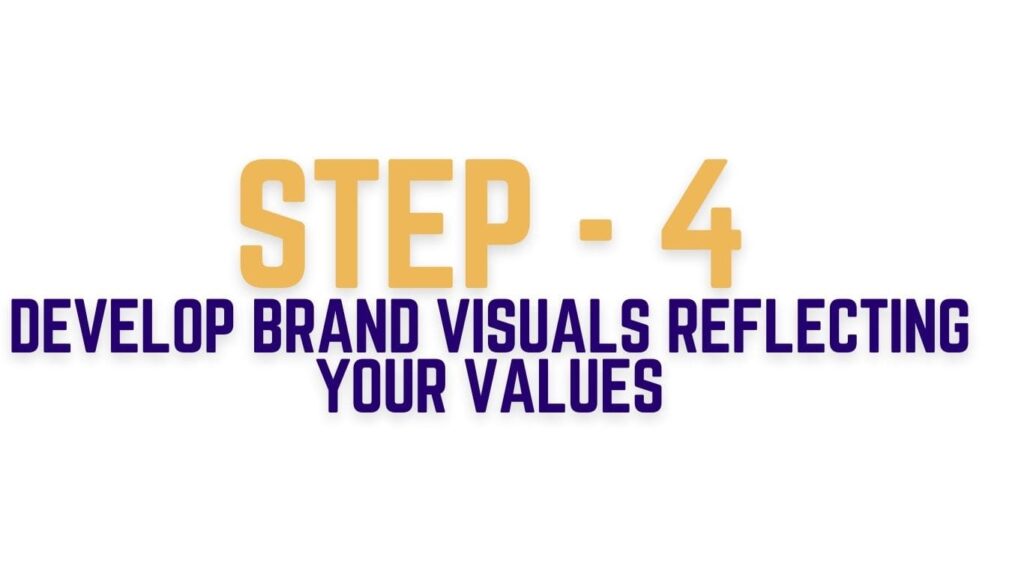
Typography:
When it comes to typography, it’s not just about picking a font that looks cool – it’s about finding one that speaks the language of your brand and connects with your audience. Instead of rushing to download the first font you see, take a moment to consider a few key factors.
First off, think about the personality you want your brand to convey. Are you sleek and modern, or classic and timeless? Choose a font style that reflects your brand’s vibe and helps you make a memorable impression.
Next, consider the font category that best aligns with your persona. Whether it’s serif, sans-serif, or something in between, make sure you’re choosing a font that feels like a cozy fit for your brand.
Finally, think about where you’ll be using the font. Will it be on your website, social media posts, packaging, or printed materials? Different contexts may call for different weights and styles of the font, so make sure you’re choosing a font family that offers the versatility you need.
While free fonts may seem like a tempting option, keep in mind that they often come with limitations. Premium fonts, on the other hand, offer more flexibility and a wider range of options – but they may also come with some rules and restrictions. Consider your budget and your brand’s needs carefully before making a decision.
Color Palette:
Select colors that evoke the desired emotions and perceptions associated with your brand.
Now, the question is- How do select your color palette?
Most companies select a common or trending color that all their competitors in their industry are using. Take the example of mineral water. Mostly all the brands in this segment use the same primary color. i.e Blue and White.
Even Bailey was using the same color palette.
But soon it rebranded itself, broke the monopoly and now it looks like this, making it stand out from its competition.
Hence I highly recommend, place all your biggest competitors on a color spectrum map, and pick any color… other than the one your competitors are using.
Now it is time to select your palette (Basically 4 colors)
- Primary Colors (2 shades) – These are used for your headlines, color blocks, and main elements
- Secondary Colors- They are typically used for your backgrounds and contrasting color blocks for your primary
- Accents- Compliment your palette with very contrasting colors used as action colors for CTA’S and Special Headlines
It’s better you stand out than blend in.
Step 5: Create Consistent Design Elements Across All Brand Assets
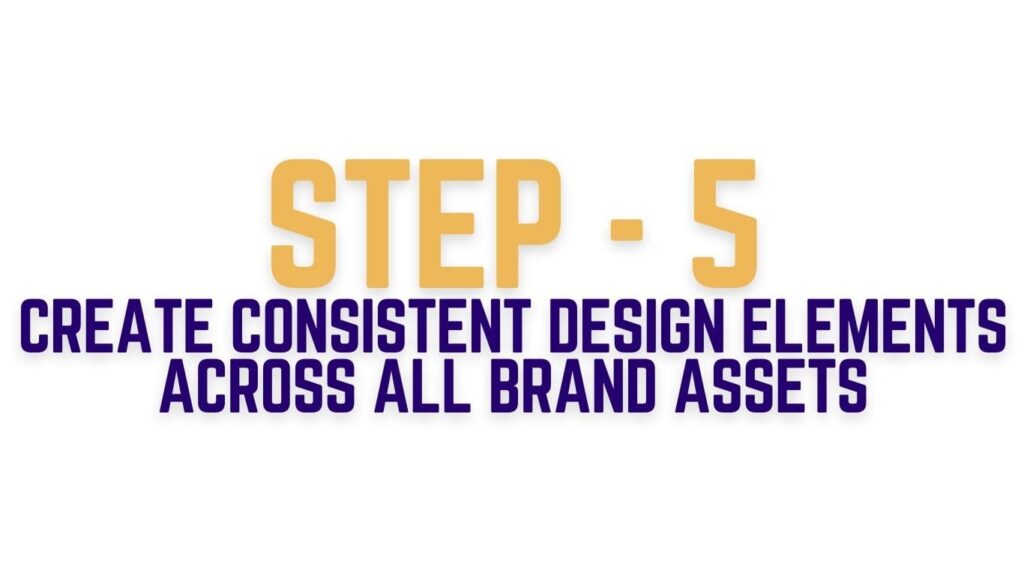
- Website:
Your website is your brand’s online home. It’s like decorating your room – you want everything to match and feel cozy.
- Logos:
Your logo is like your brand’s face – it’s the first thing people see and it represents who you are. Make sure your logo is prominently displayed on your website, usually at the top of the page. It should be clear, easy to read, and reflect the personality of your brand. Whether it’s sleek and modern or fun and playful, your logo sets the tone for your entire website.
- Pictures:
Just like decorating your room with photos and artwork, choosing the right pictures for your website is crucial for creating the right atmosphere. Use images of excellent quality to highlight your products, services, or brand personality. Whether it’s photos of happy customers using your products or stunning landscapes that evoke the feeling of your brand, make sure your pictures tell a story and resonate with your audience.
- Designs:
The overall design of your website is like the layout and decoration of your room. It should be visually appealing, easy to navigate, and consistent with your brand identity. Choose colors, fonts, and layouts that complement your logo and pictures, creating a cohesive and inviting atmosphere. Whether it’s a clean and minimalist design or a bold and vibrant one, make sure it reflects the essence of your brand and makes visitors feel right at home.
Make sure your logo, pictures, and designs all fit together and show off what makes your brand special.
- Product Packaging:
Your brand’s packaging is its outfit. It’s what makes your product stand out on the shelves and tells people what you’re all about. So, make sure your packaging reflects your brand’s values and catches people’s eyes.
- Business Cards:
Your business cards are your brand’s calling card – they’re what people remember you by. Make sure they look sharp and include all the important stuff, like your logo and contact info. That way, people will know exactly who you are and how to get in touch.
- Marketing Materials:
When you’re making flyers, posters, or ads for your brand, make sure they all have the same vibe. You want people to see them and think, “Oh yeah, that’s definitely [Your Brand]!” Keep the colors, fonts, and pictures consistent so your message comes across loud and clear.
- Transactional Emails:
Even something as boring as an email can be a chance to show off your brand’s personality! Customize your email templates with your logo and colors to make them feel like they’re coming from you. That way, when people see your emails, they’ll know it’s you – and maybe even look forward to hearing from you!
- Social Media Presence:
Your social media profiles are your brand’s hangout spots. Whether you’re on Instagram, Facebook, or Linkedin, make sure your profiles all look and feel the same. Use the same colors, logos, and style to make sure people recognize you wherever they find you online.
By keeping your brand’s design consistent across all these different places, you’ll make sure people remember you!
Following this ensures a cohesive Brand identity. It gives your audience a Strong, Cohesive, Focused, and Clear Message about your brand.
Frequently Asked Questions:
What is Brand Identity Definition:
Brand identity is how you want your company to appear in front of your customers. It relates to the physical aspect of your brand. It encompasses everything you can see, smell, touch, taste, and hear.
What is the main objective of forming a brand identity spearheaded by a logo?
The primary goal of developing a brand identity led by a logo is to produce a recognizable and memorable visual representation that communicates the essence and values of the brand.
What is the core identity of a brand?
A brand’s core identity is the unique blend of its values, personality, mission, and visual features that set it apart from competitors and appeal to its target audience.
Why is a company’s brand name an integral part of its brand identity?
A company’s brand name is an essential component of its brand identity since it acts as a main identifier and may trigger emotions, associations, and impressions within customers, influencing their perception of the business.
What statement best describes the main benefit for establishing a brand identity?
The primary advantage of building a brand identity is the capacity to stand out in a competitive market, generate consumer trust, nurture loyalty, and create an identifiable and consistent brand experience.
What is Brand Identity Design?
Brand identity design is the process of developing visual components such as logos, colours, typography, and pictures that are consistent with a brand’s core identity yet effectively express its values, personality, and positioning to the target audience.
Signing off:
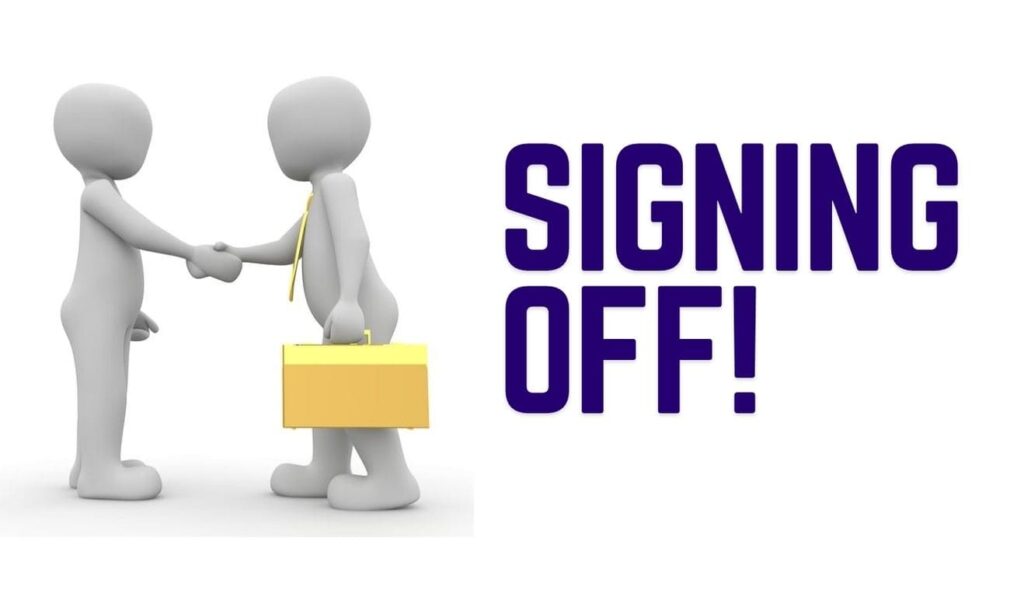
So there you have it, the complete understanding of creating a brand Identity. Throughout this journey, we’ve explored the importance of brand identity in establishing a unique and memorable presence in the market. We’ve delved into the key elements that make up a brand identity, from the logo and color palette to the tone of voice and brand values.
But understanding what brand identity is just the first step. The real power lies in taking action. And that’s where we come in.
At Visualsthatspeak, we specialize in helping businesses create compelling brand identities that resonate with their target audience. Our team of experts will work closely with you to understand your vision, values, and goals, and translate them into a cohesive brand identity that sets you apart from the competition.
So don’t wait any longer. Take the leap and invest in your brand’s future. Contact us today to get started
Remember, your brand is more than just a logo or a tagline. It’s the essence of who you are as a business.
Contact us now to create your own powerful brand identity!
Also read- The Difference between Visual Identity and Brand Identity
Also Read- What is Visual Branding
